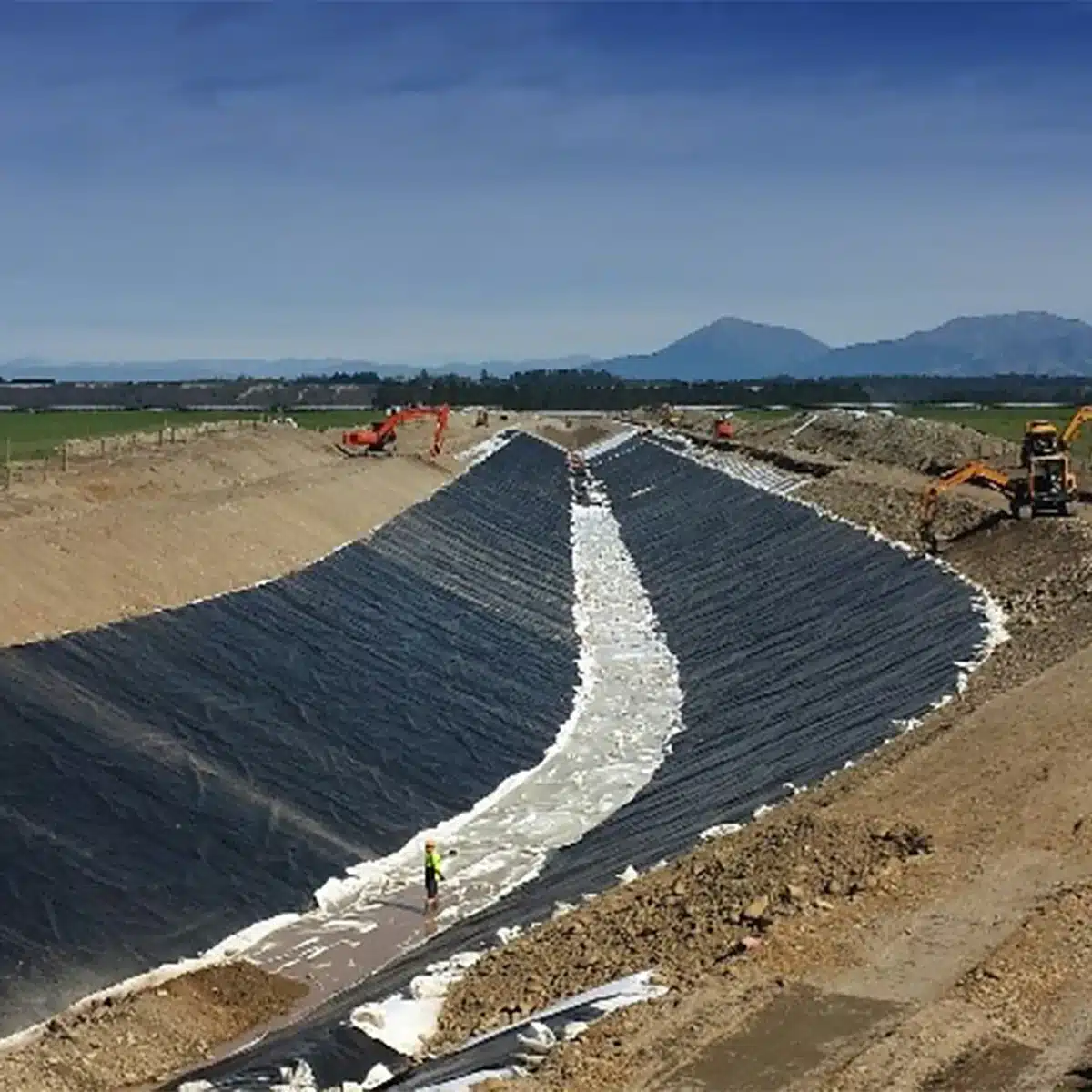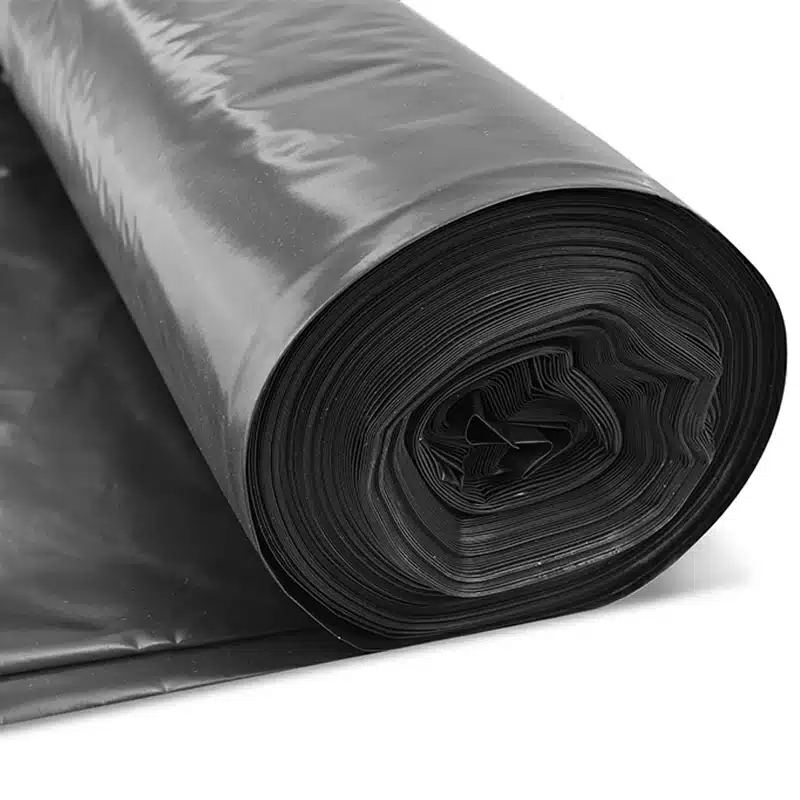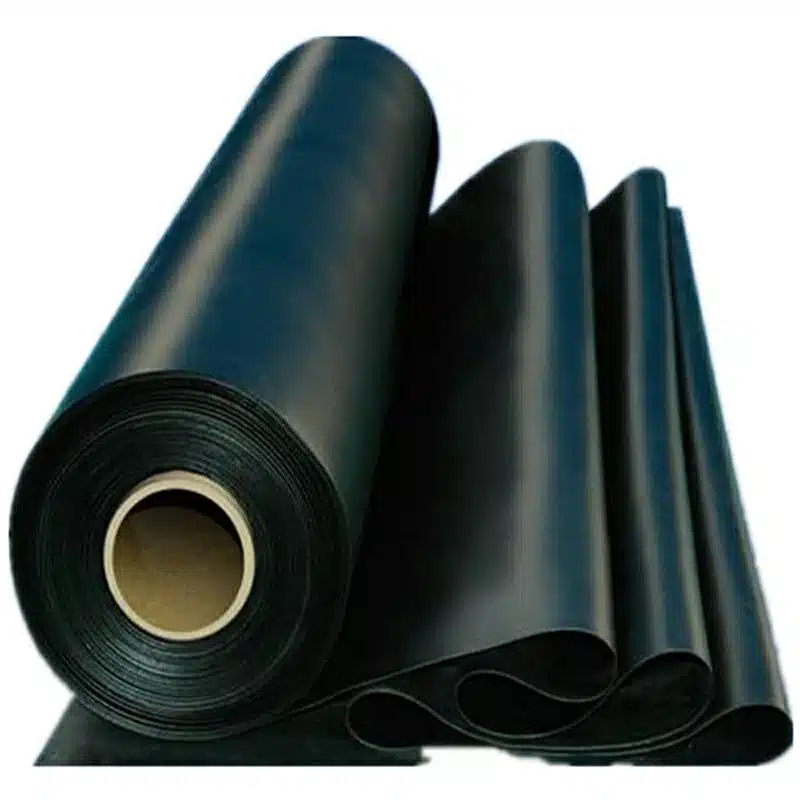+86-159 9860 6917
info@geofantex.com
geofantex@gmail.com
+86-400-8266163-44899
High-density polyethylene (HDPE) geomembrane is a type of synthetic liner widely used in environmental engineering projects to control water flow, prevent contamination, and provide a barrier for various applications, including landfills, ponds, and reservoirs. Made from a tough, impermeable material, HDPE geomembranes play a crucial role in waste management, water containment, and land reclamation projects. Due to their durability, chemical resistance, and environmental compatibility, they are one of the most common types of geomembranes used globally.
What is an HDPE geomembrane?
HDPE geomembrane is a polyethylene-based sheet material designed for waterproofing and containment purposes. It is produced by melting high-density polyethylene resin and shaping it into large sheets that are then welded together to form a seamless barrier. Known for its excellent tensile strength, low permeability, and high chemical resistance, HDPE geomembranes have become the preferred product for lining projects. They are widely used in various civil engineering applications to prevent the leakage of liquids and gases from containment areas.

What is the difference between PVC and HDPE geomembrane?
The primary difference between PVC (Polyvinyl Chloride) and HDPE geomembranes lies in their chemical composition and physical properties. PVC geomembranes are flexible and relatively easy to handle, while HDPE geomembranes are tough and non-flexible. HDPE is known for its higher tensile strength and resistance to environmental factors such as UV radiation, temperature fluctuations, and chemical exposure, making it ideal for use in harsh conditions. On the other hand, PVC is more flexible, making it easier to install in areas with complex terrain, but it is less resistant to chemical degradation and UV exposure over time. PVC geomembranes are often preferred for projects with less stringent durability requirements, while HDPE is ideal for long-term applications.
What is the difference between HDPE and LLDPE geomembrane?
LLDPE (Linear Low-Density Polyethylene) geomembranes differ from HDPE geomembranes in their molecular structure, which gives them distinct physical properties. LLDPE geomembranes are more flexible and elongate better than HDPE, making them ideal for applications that require greater flexibility and ease of installation, as LLDPE can be stretched easily over obstructions. However, HDPE has a greater puncture resistance, providing superior strength and chemical resistance. This makes HDPE a better choice for projects requiring high resistance to puncturing, chemicals, and environmental stress. LLDPE is commonly used in more flexible, less demanding applications, while HDPE is used in projects with more rigorous performance requirements.
What is the purpose of geomembrane?
The primary purpose of a geomembrane is to act as a barrier to contain liquids, gases, and other materials while preventing environmental contamination. Geomembranes are used in a wide variety of applications, including landfills, wastewater treatment facilities, mining operations, and agricultural projects. In landfills, they are crucial to stabilize earth and to secure landfills, ensuring the containment of hazardous or municipal wastes and their leachates. Geomembranes help control the movement of hazardous materials and protect surrounding ecosystems from contamination. Additionally, they provide solutions for water management, including the lining of ponds, canals, and reservoirs, by reducing water loss and preventing leakage.
On the other hand, nonwoven geotextiles, while commonly used for filtration and drainage applications, can also serve in soil stabilization projects under the right conditions. They are not as strong in tension as woven geotextiles, but their ability to provide effective filtration and drainage can be advantageous in stabilization situations where water flow needs to be managed alongside soil reinforcement. Depending on the specific project requirements—such as soil type, drainage needs, and load conditions—nonwoven geotextiles can be a viable option for improving soil stability.
HDPE geomembranes are an essential part of modern environmental engineering, offering excellent protection against contamination, waste leakage, and water loss. With distinct advantages over other materials like PVC and LLDPE, HDPE is preferred for projects requiring high chemical resistance and durability. Whether used in landfills, reservoirs, or other containment applications, HDPE geomembranes are indispensable for safeguarding the environment and ensuring long-term functionality in a variety of industries.



Get Free Sample
We’ll respond as soon as possible(within 12 hours)






















